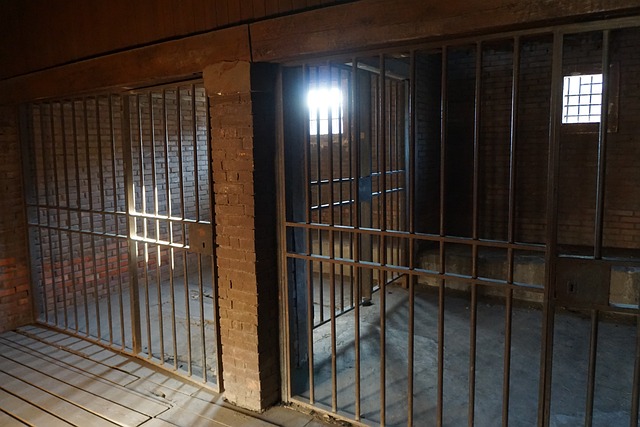Rural communities face distinct challenges with DUI cases due to low population densities and limited resources, leading to longer response times for law enforcement. Effective Rural Community DUI Prevention requires collaboration between local authorities, community leaders, and specialized strategies. These include alternative vehicle holding facilities, public awareness campaigns, expanded access to substance abuse treatment, and bolstered local law enforcement capabilities. Understanding local procedures and rights is vital for impounded vehicle releases, with dedicated organizations offering tailored support. By raising awareness, enforcing stronger laws, and integrating technology, these communities significantly reduce DUI incidents, ensuring safer environments.
In rural communities, impounded vehicles and DUI offenses present a unique challenge distinct from urban settings. Understanding these issues is crucial for mitigating their impact on already vulnerable areas. This article explores various facets of rural community DUI prevention, including legal rights, release processes for impounded vehicles, and successful strategies employed across the nation. By delving into these topics, we aim to empower residents and law enforcement alike in combating this pressing issue within rural environments.
- Understanding Impounded Vehicles and DUI Laws in Rural Communities
- The Impact of DUI Offenses on Rural Areas: A Unique Challenge
- Navigating the Release Process: Options for Impounded Vehicles
- Legal Rights and Resources for Rural Drivers Post-DUI Arrest
- Preventive Measures: Educating Rural Communities About DUI Risks
- Case Studies: Successful DUI Prevention Strategies in Rural Settings
Understanding Impounded Vehicles and DUI Laws in Rural Communities

In rural communities, impounded vehicles and DUI (Driving Under the Influence) cases present unique challenges. Due to lower population densities, law enforcement resources are often stretched thin, leading to longer response times for incidents involving impaired driving. This lag can result in impounded vehicles, as responding officers may not be able to arrange immediate release or transportation for those arrested.
Rural Community DUI Prevention efforts must consider these logistical hurdles. Strategizing with local law enforcement and community leaders is crucial to establishing efficient processes for handling impounded vehicles during DUI cases. This might involve setting up alternative arrangements, such as temporary holding facilities or partnerships with private towing companies, to expedite the release process and ensure public safety in these less-resourced areas.
The Impact of DUI Offenses on Rural Areas: A Unique Challenge

In rural areas, the impact of DUI (drunk driving) offenses presents a unique and significant challenge to community safety and well-being. These communities often face limited resources when it comes to law enforcement and rehabilitation programs, making it harder to implement effective DUI prevention strategies compared to urban centers. The low population density can also contribute to underreporting of drunk driving incidents, exacerbating the problem further. As a result, rural residents may be at higher risk of becoming victims or perpetrators of DUI-related accidents due to reduced visibility and infrastructure gaps.
Rural Community DUI Prevention demands tailored approaches that address these unique circumstances. This includes increasing public awareness through targeted campaigns, improving access to substance abuse treatment programs, and enhancing local law enforcement capabilities for effective enforcement and impounded vehicle management. By focusing on these aspects, rural communities can play a crucial role in reducing DUI instances and fostering safer environments for all residents.
Navigating the Release Process: Options for Impounded Vehicles

Navigating the release process for an impounded vehicle after a DUI (Drunk Driving Under Influence) arrest can be confusing, especially in rural communities where access to legal assistance might be limited. The first step is understanding your rights and local regulations. Many states have specific procedures for recovering vehicles impounded due to DUI, which often involve contacting the law enforcement agency that handled your case or the court responsible for the impoundment.
In rural community DUI prevention efforts, it’s crucial to know that some jurisdictions may offer options like a bond or bail to secure the release of your vehicle while your case is pending. This can be especially important if you need the vehicle for work or daily transportation. It’s essential to gather all necessary documentation, such as proof of insurance and registration, and consult with an attorney to ensure compliance with local laws, thereby facilitating a smoother process and reducing unnecessary delays in getting your vehicle back.
Legal Rights and Resources for Rural Drivers Post-DUI Arrest

For rural drivers facing DUI charges, navigating the legal system can be particularly challenging due to limited resources and a lack of accessibility to urban-centric legal aid. These communities often experience fewer lawyer offices or public defenders, making it harder for individuals to exercise their legal rights. However, there are dedicated organizations and state-funded programs that offer support tailored to the needs of rural areas. Many non-profit legal clinics focus on DUI prevention and education within these communities, providing a much-needed service.
Understanding one’s rights is crucial in these situations. Rural drivers should be aware of their ability to request a blood or breath test, remain silent, and consult with an attorney. Local law enforcement agencies often collaborate with community groups to raise awareness about DUI laws and resources available for those facing charges. These efforts play a vital role in the Rural Community DUI Prevention initiative, ensuring that even remote areas have access to legal support and education.
Preventive Measures: Educating Rural Communities About DUI Risks

In rural communities, where close-knit relationships often prevail, raising awareness about the dangers of driving under the influence (DUI) can be a powerful preventive measure. Educating residents about the specific risks associated with DUI in their area is essential. This can involve hosting community meetings, workshops, or utilizing local media outlets to disseminate information on the impact of impaired driving, legal consequences, and available resources for assistance. Tailoring these educational efforts to the unique characteristics of rural living, such as limited access to public transportation or higher rates of alcohol consumption during social events, ensures a more effective outreach strategy.
By empowering individuals within these communities with knowledge about DUI risks, they can collectively take action to promote safer behaviors. Encouraging open dialogue and fostering a culture of accountability can lead to better decision-making when facing peer pressure or challenging situations. Ultimately, these educational initiatives contribute to the overall goal of Rural Community DUI Prevention by creating a supportive environment where responsible choices regarding alcohol consumption and safe driving are encouraged and embraced.
Case Studies: Successful DUI Prevention Strategies in Rural Settings

In rural communities, where resources can be limited, innovative and effective Rural Community DUI Prevention strategies are essential to combat the unique challenges posed by drunk driving. Case studies from various regions highlight successful approaches tailored to these environments. For instance, some areas have implemented robust public awareness campaigns utilizing local influencers and leveraging social media platforms popular among rural dwellers. These campaigns not only educate residents about the dangers of impaired driving but also foster a collective sense of responsibility within these tight-knit communities.
Another effective strategy involves strengthening law enforcement presence and collaboration with local businesses. Rural bars and restaurants can participate in high-visibility enforcement operations, while officers can use data analytics to identify patterns and hotspots for DUI incidents. Additionally, the integration of technology, such as breathalyzer stations at popular gathering places, has proven successful in deterring potential drunk drivers. These measures have led to significant reductions in Rural Community DUI Prevention outcomes, demonstrating that tailored, community-driven initiatives can make a substantial impact in rural areas.
In rural communities, where access to transportation is often vital for daily life, impounded vehicles due to DUI offenses create a unique challenge. However, understanding the specific legal landscape and available release options can empower drivers. By educating residents about the risks of DUI and utilizing successful prevention strategies highlighted in case studies, these communities can foster safer practices and reduce the impact of such incidents. Implementing preventive measures is key to mitigating Rural Community DUI Prevention, ensuring a safer and more supported environment for all.






